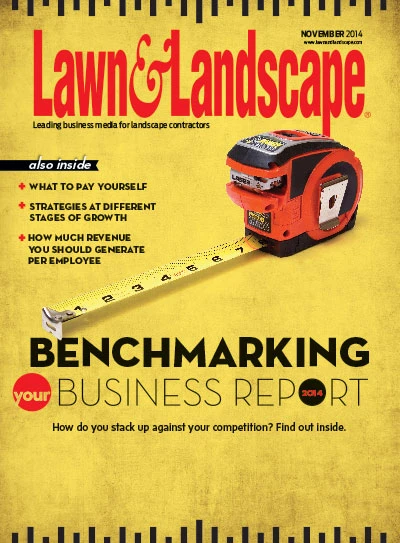|
|
A number of years ago, I told Marc Dutton, president of Marc Dutton Irrigation in Waterford, Mich., that the larger, well-established companies with good reputations were magnets when it came to recruiting good help. Good people would show up at their doorstep. Years later, Marc reminded me of this statement and he told me that’s what was happening with his company. He didn’t have to chase down good candidates. They would just appear at the door and apply for a job. I’ve seen the same thing happen at Pacific Lawn Sprinklers in Queens, N.Y. John Dellafiora and his two brothers, Stephen and Peter, have built a great company with an excellent reputation. John runs the administrative side of the business while Stephen and Peter run sales and field operations. The atmosphere at PLS is electric. It’s a great place to work. The staff is like family and many will spend their entire careers there. Mike Matthews, president of For-Shore Weed Control in Brick, N.J., told the participating members of my 2014 Jackson Hole, Wyo., brainstorming meeting, that he doesn’t have any turnover. Later he told me that this isn’t always a good thing as it may mean that company standards are too low. However, just like Marc and John, Mike has created a great company that attracts good people who are looking for an opportunity with a future. These companies have created an “air of expectancy” within and without their organizations that says, “Join our team and you can have a great future with us.” They’ve created a career path. You could call it the lure of adventure. It’s something much bigger than just a job. And it’s palpable – people sense it. Job descriptions aren’t just to let an individual know what’s expected of him or her. They should be shared throughout the organization to clearly show everyone what skills they need to master to climb to the next level or to a position to which they aspire. And don’t think that this is just for the big companies. Small companies with just a few employees should also use job descriptions to clearly outline what’s expected for employees today and tomorrow. Accountability. Someone once said, “People do not do what you expect. They do what you inspect.” Accountability is first having a quantifiable standard, benchmark or goal to aim for with a deadline. Once you have set a goal, next you need to have feedback providing the originator with an over/under variance in relation to the goal. It can be as simple as telling a crew leader that he has three crew-days or 90 man-hours (3 days × 3 men × 10 man-hours per day = 90 man-hours) to install a foundation planting with his three-man crew. If you start the job first thing Monday morning, it has to be completed by the end of the day on Wednesday. The planting has to be done safely and according to the design provided. This job is measurable (3 crew-days/90 man-hours) and has a deadline (has to be done by end of day Wednesday). We too often fail to set clearly defined goals that are both quantifiable and have a deadline. Office staff should have desk top procedures, office checklists and standard operating procedures (SOPs) with due dates and sample reports to provide clear goals and expectations. Get it in writing. Committing goals and procedures to writing helps everyone understand the process of getting things done. It takes the mystery out of the process. It also facilitates training new hires and cross-training existing staff. Owners should also have clearly defined goals and expectations. This takes the form of two primary documents. First is the business/strategic plan. This is a written document outlining what the business is all about and what it is attempting to do over a period of time. Second is the annual budget, which, if done properly, is a written document that outlines and quantifies the business operation for a one-year period. Here again, we have goals which facilitate accountability. Too often organizations become a morass of subjectivity. You have to balance reasonable goals and apply them to the organization with a crawl, walk, run approach. If you quantify too much too soon, you can paralyze the organization. Just like in sports, you have to listen to your team and develop athletes step-by-step and in accordance with individual ability.
|
Get curated news on YOUR industry.
Enter your email to receive our newsletters.
Explore the November 2014 Issue
Check out more from this issue and find your next story to read.
Latest from Lawn & Landscape
- Project EverGreen helps revitalize Milan Park in Detroit
- Trex Company wins Product of the Year, Judges’ Choice Winner at Environment+Energy Leader Awards
- General Equipment & Supplies in Fargo adds Takeuchi equipment
- Mariani Premier Group acquires Hazeltine Nurseries
- EnP Investments adds Mark McCarel as Northeast territory sales manager
- Our April issue is now live
- Ready or not
- Tribute to an industry guru







